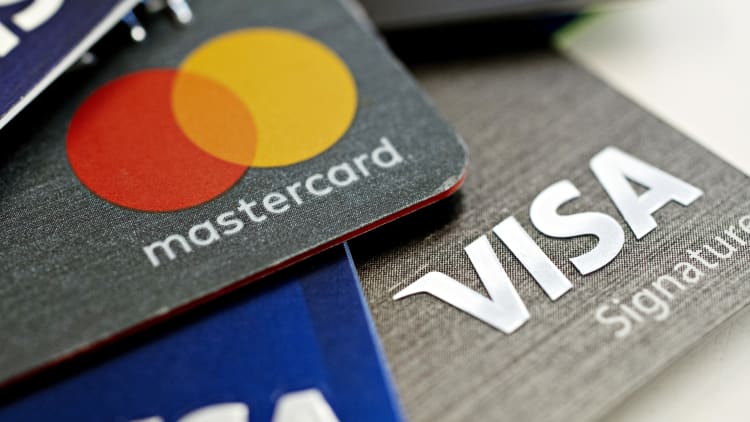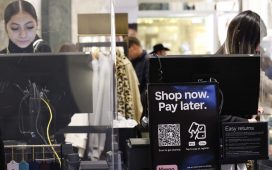Both retail credit cards and buy now, pay later programs can offer opportunities to spread out payments for high-priced purchases, especially during the year-end holiday shopping season.
Buy now, pay later, or BNPL, is like a new form of old-school layaway plans, except you can take an item you buy with you rather than leaving it at the store until you pay it off. Using financing deals from retail credit cards also allows you to take an item home immediately after purchase, but they operate differently than BNPL plans and serve different purposes.
More from Personal Finance:
These credit cards have had ‘increasingly notable’ high rates
‘Cash stuffing’ may forgo ‘the easiest money’ you can make
Student loan borrowers reenter ‘messy system’
Shoppers who plan on spending hundreds of dollars on holiday gifts this year may want to compare and contrast both payment options.
“Either tool can work for you, it really just depends on your particular situation,” said Matt Schulz, chief credit analyst at LendingTree.
Here’s how to decide which program works best for you and your financial goals, according to experts.
Buy now, pay later deals can buy you ‘a little extra time’
“If you need a little extra time to pay something off, then a ‘buy now, pay later’ loan can be a really appealing thing,” said Schulz.
That’s because BNPL allows you to take an item home or have it shipped to you immediately after you agree to make a set number of payments over a set period of time, according to Sara Rathner, a credit card expert and writer at NerdWallet.

While consumers may find these programs a bit more palatable compared to carrying credit card debt, shoppers should be mindful that interest or fees may still be rolled into those monthly payments, depending on the company and terms of the deal, added Rather.
BNPL accounts can also be difficult to manage if you have several different ones active at one time.
“If you bought a bunch of stuff and you entered into several BNPL plans around the same time, you’re going to be having these withdrawals from your account within a short time frame of each other,” said Rathner.
Depending on how tight your budget is, your financial situation can get complicated, noted Schulz.
Retail store 0% deals can help with big purchases
Retail stores’ co-branded credit cards can give shoppers valuable benefits, such as discounts and early access to sales, especially during the holidays.
But their interest rates tend to be much higher than regular credit cards: The average retail card APR hit a record 28.93%, according to recent Bankrate research. Consumers can bypass interest payments by paying their balance in full every month, said Rathner.
In addition, retail credit card accounts — especially newly opened ones — often include “deferred” or zero interest promotions. A “deferred interest” or 0% interest retail card can give you roughly six to 12 months to pay a bigger purchase off, said Schulz.
However, it will be really important to pay the balance off before the period ends. Otherwise, not only will you be saddled with interest on the remaining balance, you will also retroactively incur interest on the original purchase price, warned Rathner.
How BNPL, retail cards can affect your credit
Holiday debt can be very sticky for cardholders. Nearly a third of Americans (31%) of Americans who incurred credit card debt when shopping during last year’s holiday season had yet to pay it off in August, NerdWallet found.
Yet, people still plan on financing their holiday purchases on debt. Actually, sign-ups for retail credit cards consistently spike every year in the fourth quarter, specifically November and December, according to credit bureau company Equifax.
Retail cards are often a cardholder’s first line of credit opened because they can be easier to qualify for.
Unlike a BNPL, a new retail card will mean you’ll be able to access that credit going forward if you need it, and it can also help you to rebuild your credit score, said Schulz.
BNPL don’t help you improve your credit score because that payment history isn’t reported, said Schulz.
Additionally, credit cards can provide a stronger consumer protection; if you need to make a return or if a merchant doesn’t hold up their end of the bargain with a purchase, you have the ability to dispute the charge and get money back if ruled in your favor, said NerdWallet’s Rathner.
“So many people, for better or worse, lean on credit cards as an emergency fund in difficult times,” added Schulz. “That’s not something you can do with a BNPL.”












